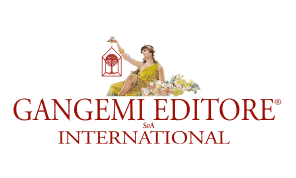
Fuori commercio
World Heritage and Food to Feed. Abstract
Le Vie dei Mercanti_XXIII International Forum
A cura di: Gambardella Carmine
English Full Text
Formato: 17 x 24 cm
Legatura: Filorefe
Pagine: 104
Anno edizione: 2025
ISBN: 9788849253665
EAN: 9788849253665
UB. INT. :
Contenuto
ARCHITECTURE HERITAGE and DESIGN | 16 Series founded and directed by Carmine Gambardella
From the XXII FORUM WORLD HERITAGE and CITIES IN EMERGENCIES to the XXIII FORUM WORLD HERITAGE and FOOD TO FEED
The theme “World Heritage and Food to Feed” explores the connection between world heritage and food, highlighting how culinary traditions and cultural landscapes can contribute to sustainable nutrition and address global challenges such as food security and climate change. Culinary traditions, like the Mediterranean diet and Japanese washoku, are protected by UNESCO for their cultural value and respect for sustainable agricultural practices. Other examples include agricultural landscapes like the rice terraces of the Philippines and historic olive groves, which promote biodiversity and sustainability. These agricultural landscapes are also linked to architecture, cities, and historic centers, where architectural design integrates food production and sustainability. Traditional agricultural practices, such as crop rotation and the use of local varieties, can ensure food security without harming the environment. Biodiversity is crucial, with agricultural practices that preserve unique ecosystems and reduce environmental impact. Architecture plays an important role in reflecting food and cultural values. Designing homes that promote conviviality, sustainability, and a connection to nature, such as traditional Mediterranean houses, Japanese homes, or rural dwellings in developing countries, fosters a connection between food, community, and the environment. Sustainability in architecture can also be seen in contemporary projects that combine tradition and innovation, like modular bamboo homes in Vietnam or urban agriculture projects in Cuba. Historic Italian buildings, like masserie in Southern Italy, trulli in the Valle d’Itria, courtyard houses in the Po Valley, and the Sassi di Matera, reflect the bond between architecture, food, and landscape. These historical buildings were designed to meet agricultural and food production needs, such as food preservation and production. Italian architectural solutions are examples of sustainability that integrate traditional food practices with the surrounding environment. Global challenges require an integrated approach to food sustainability. Scientific communities and governments must cooperate to promote agricultural practices that preserve biodiversity and encourage food self-sufficiency. Architecture, therefore, becomes a powerful tool to reflect values related to food and sustainability, creating spaces that celebrate cultural diversity and promote innovative solutions for a more sustainable and connected future. Finally, architecture and food are closely linked to cultural heritage, and innovative and resilient solutions can inspire global design that respects the environment and promotes equitable access to food. Scholars are called upon to contribute with research and proposals to develop sustainable practices that integrate food with daily life and architectural context, reflecting local traditions and global needs.
CARMINE GAMBARDELLA
UNESCO Chair on Landscape, Cultural Heritage, and Territorial Governance; President and CEO of the Benecon University Consortium – Research Centre on Cultural Heritage, Ecology, Economy. Seal of Merit awarded by the Ministry of University and Research, as a mark of distinction demonstrating its commitment to preparing programs aimed at responding promptly and with greater autonomy to the renewed demands for new learning and research in a rapidly changing economic, social and technological world. Full Professor of Drawing at the Pegaso University and at the University of Campania. President of the International Forum ‘Le Vie dei Mercanti’ since its first edition in 2003 to the XXIII edition in 2025. Editor and Founder of the series “Surveying is/or Project”, “Knowledge Factory” and “Architecture, Heritage and Design”. Component of the Scientific Committee of International A Class Magazine ‘Abitare la Terra’/‘Dwelling on Earth’ (Gangemi Editor International Publishing). He covered various roles for the University of Campania, including the Pro Rector of Institutions, Academic Senator, Director of the Department of Architecture and Industrial Design Luigi Vanvitelli, Dean of the Faculty of Architecture Luigi Vanvitelli, Director of the Department of Culture of Design, Director of Doctoral School in the Discipline of Architecture, Coordinator of the PhD in Protection, Safety and Representation of the Environment and Structures and Territorial Governance, Coordinator of the PhD Program in Surveying and Representation of Architecture and the Environment. He is author of numerous scientific international papers, publications and proceedings on surveying and representation of the built and natural heritage.
Clicca per scaricare gli abstract a diffusione gratuita / Click here to download the Abastracts
Parole chiave
Condividi su

